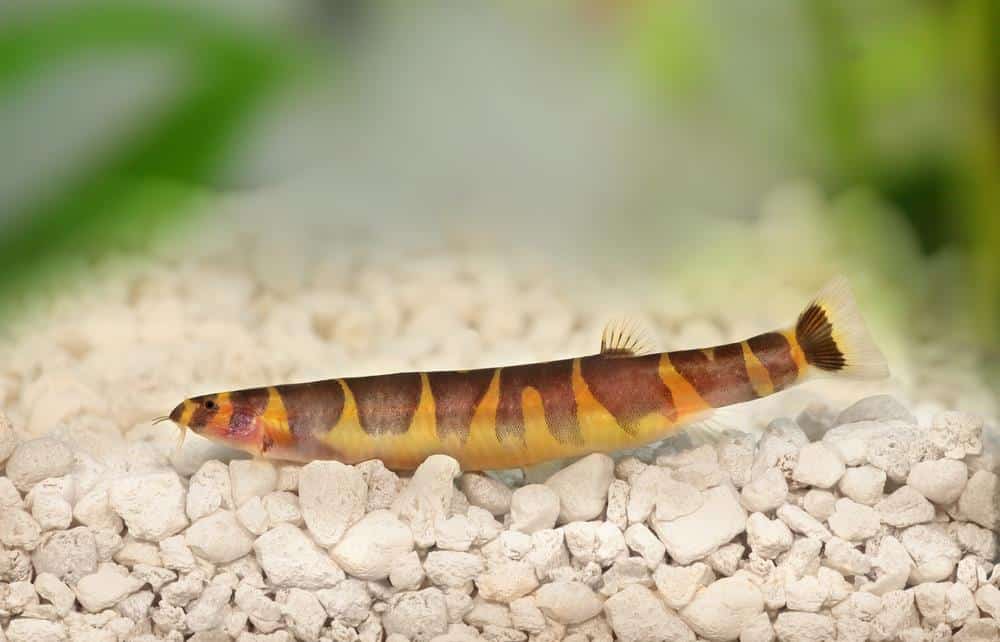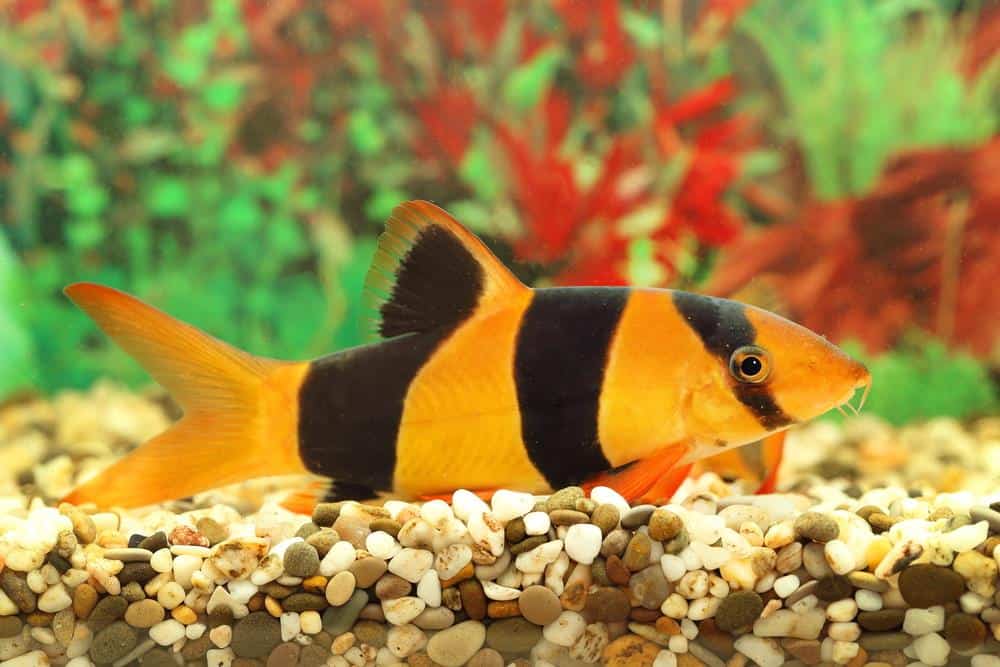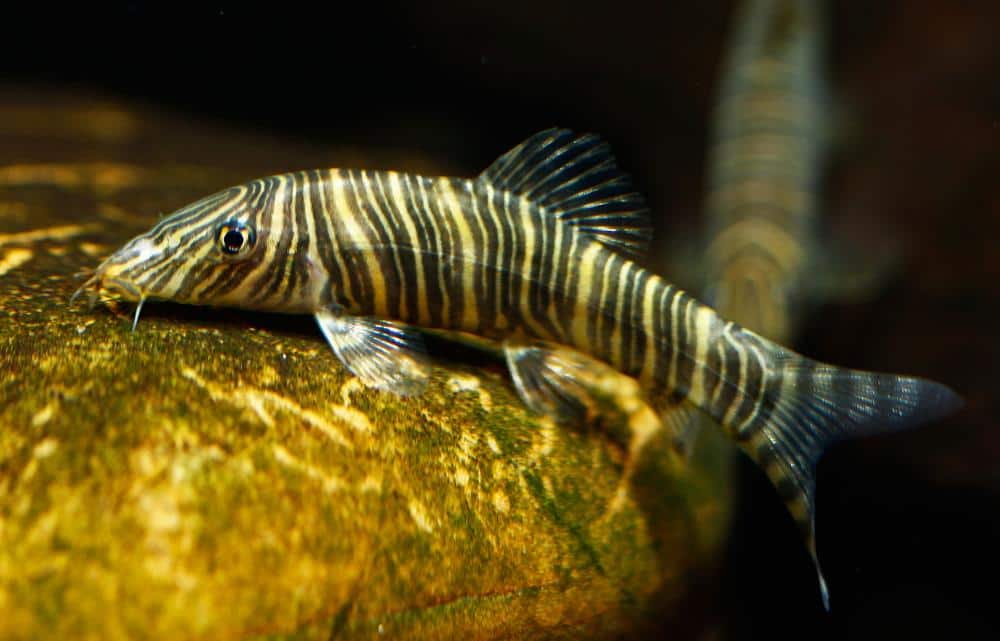Often confused with catfish, loaches belong to the family Cobitidae and occur in both tropical and temperate regions. All loaches have barbels around the mouth and, even though it is not always obvious, a spine below each eye. When a loach feels threatened, it will raise its spines, making itself more difficult for a predator to swallow. The spines can easily become entangled in a net, so extra care is called for when catching these fish. The small species fish are popular in 10-gallon tank.
Loaches are mostly shy, nocturnal fish, and so may have to be coaxed into view with live foods.
Coolie Loach

The beautiful banding of Coolie Loaches is highly variable, ranging from predominantly yellow to reddish between individuals. These fish burrow readily into the substrate, and may even disappear completely out of sight beneath the undergravel filter plate if they can gain access to this part of the tank. Spawning is possible in aquarium surroundings, with the green eggs simply being scattered among the tank vegetation.
Horse-Face Loach
The pattern of dark spots on a brownish-yellow background is variable, probably reflecting the different local habitats in which this fish naturally occurs. In the aquarium, very little will be seen of the Horse-Faced Loach, since it spends most of its time either on the bottom of the tank or buried in the substrate with just its face protruding. A fine-grained covering over at least part of the tank’s base is recommended for burrowing purposes. Aquarium plants should be set in pots, to prevent them from being uprooted by the loach’s activities.
Skunk Loach
The golden-yellow coloration of the Skunk Loach is broken by a black stripe running along the entire length of the body, and a black band that encircles the caudal peduncle. Like other Botia loaches, it has two pairs of sensory barbels on its snout, which help it to
locate food as it digs in the substrate. The lighting for this fish should be subdued, and the tank decor must include retreats where the fish can shelter.
Clown Loach

Broad bands of orange and black on the body of the Clown Loach allow this species to be identified without difficulty. Clown Loaches thrive in groups, although large specimens will occasionally prey on much smaller companions. Clown Loaches have a disconcerting habit of floating on their sides. This is not usually a sign of their imminent demise— it is simply the position in which these fish sometimes choose to rest. The Clown Loach is more conspicuous in the aquarium than many of its relatives, not only because of its attractive patterning, but also because it is more active in the daytime.
Zebra Loach

The patterning of the Zebra Loach consists of alternating pale yellow and brownish vertical stripes, with the paler bands especially being variable in width. These loaches should be kept in groups. They will often choose to hide away for long periods under bogwood and in other retreats. In common with other Botia loaches, breeding is unknown in aquarium surroundings. Feeding is very straightforward, with small worms being a favorite food of these loaches.
Redtail Loach
Although the body coloration of this species sometimes appears to be bluish-gray, in optimum water conditions it will change to a much brighter shade of blue, making a striking contrast with the orange on the fins. These loaches are adapted to group living, but they may be less well-disposed toward similar species sharing their tank. Nocturnal by nature, they will hide away during the day, often under the substrate, and emerge to feed at night.
Dwarf Loach
This small species has dark horizontal and vertical bands on its upper body that interconnect to create a distinctive chainlike pattern. Dwarf Loaches are lively and active fish that look best when kept together in a group and make an ideal choice for a community setup. Cryptocoryne plants are a good addition to their aquarium since the fish like to rest on their broad leaves. Dwarf Loaches will comb the tank floor in search of edible items.


Related Posts
How Much Salt Should I Add To My Freshwater Aquarium
Everything You Need To Know About Using T5 Lights For Your Aquarium
From Cambrian to Current: A Fish Evolution Story